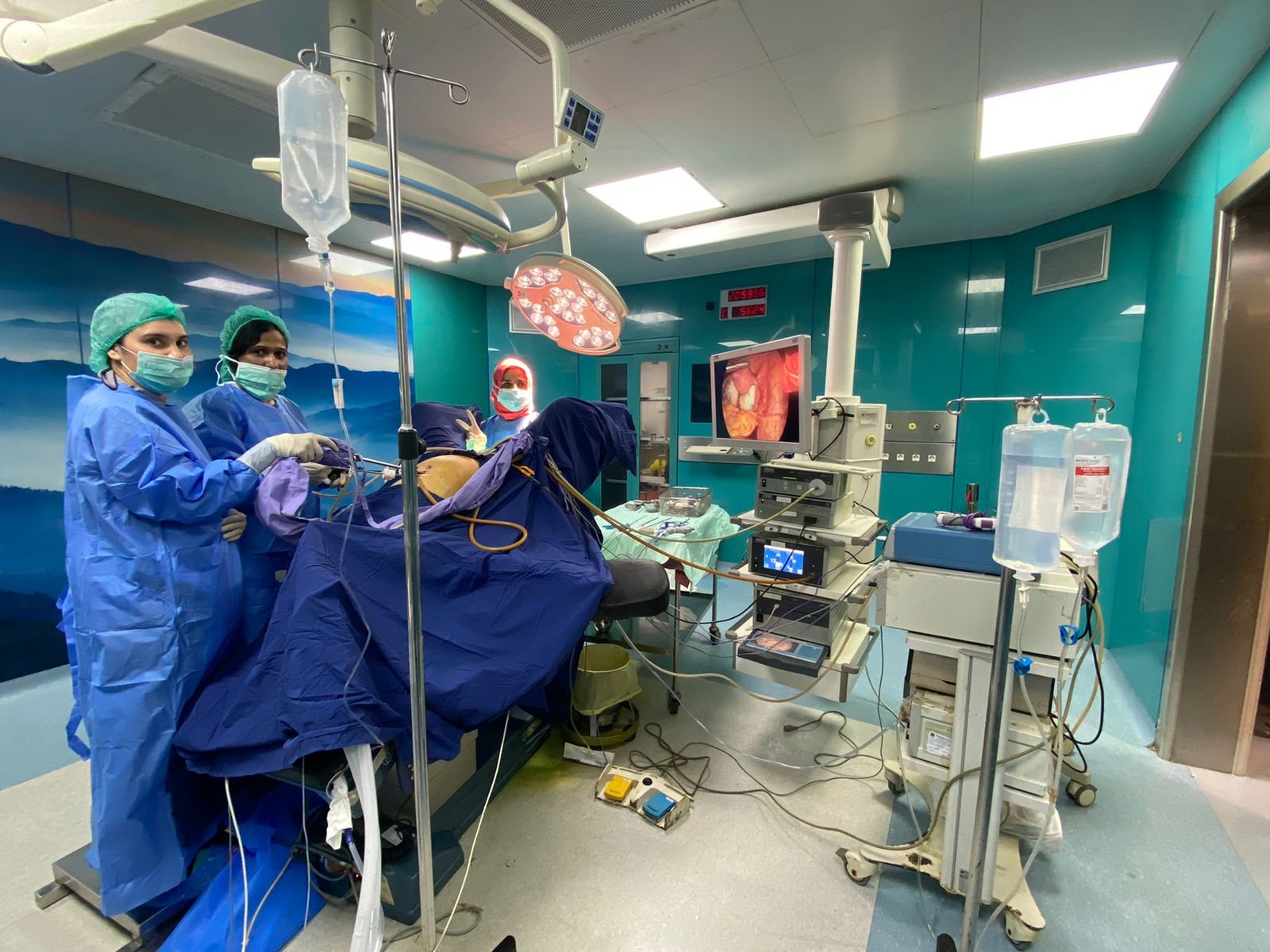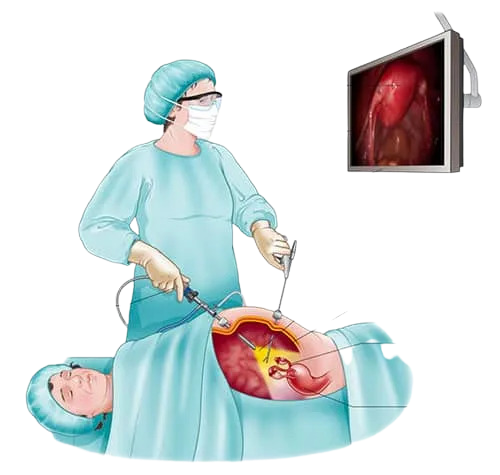Tubal Ligation
Home > Gynae Treatments > Tubal Ligation

Tubal ligation, also known as female sterilization or getting woman's "tubes tied," is a surgical procedure in which the fallopian tubes are permanently blocked, cut, or sealed to prevent pregnancy. By obstructing the fallopian tubes, sperm is unable to reach the eggs and that is why fertilization is prevented. Tubal ligation is a highly effective and permanent form of contraception, and it is considered a long-term birth control method for women who no longer wish to have children or want to prevent future pregnancies.
Tubal ligation and tubal sterilization are often used interchangeably, but they essentially refer to the same procedure. Both terms describe the surgical process of permanently blocking or sealing the fallopian tubes to prevent pregnancy. The primary goal of both tubal ligation and tubal sterilization is to create a barrier that prevents sperm from reaching the eggs, thereby avoiding fertilization.
Prof Dr Rehana Aamer Khan takes great pride in being the leading gynecologist specializing in tubal ligation with extensive experience and expertise in women's health. We offer the highest standard of care and compassion to our patients. Our dedicated team of gynecologists is well versed in performing laparoscopic tubal ligation, providing a minimally invasive and effective permanent contraception option for women. We prioritize patient comfort, safety, and satisfaction, ensuring a smooth and seamless experience throughout process of tubal ligation. Trust us as your top choice for tubal ligation in Lahore, as we are committed to empowering women with personalized, reliable, and quality healthcare.
Tubal ligation is generally considered for women who have decided that they do not want to have any or any more children and are seeking a permanent form of contraception. It is a suitable option for women who desire a reliable, long-term method of birth control without the need for daily pills or other temporary contraceptive measures.
Women who may benefit from tubal ligation include:
It's essential for any woman considering tubal ligation to carefully weigh the decision because it is intended to be a permanent form of contraception. While reversal procedures are possible but they are not always successful, so before making final decision you need to think all aspect of the tubal ligation.
Tubal ligation is generally considered a safe and effective form of permanent contraception. However, like any surgical procedure, it carries some risks and potential complications. But most important is regret if a women later desire to have children.

Yes, tubal ligation can be reversed through a surgical procedure known as tubal ligation reversal or tubal cannulation. During tubal cannulation procedure, the blocked or sealed portions of the fallopian tubes are reconnected or reopened to restore the continuity of the tubes. This allows the possibility of natural conception.
It is important to note that tubal ligation reversal is not always successful, and the chances of success can vary depending on several factors, including:
Before considering tubal ligation reversal, women should thoroughly discuss the procedure with a gynecologist. The specialist can assess the individual's unique circumstances, evaluate the feasibility of reversal, and discuss alternative options such as in vitro fertilization (IVF).
It's important to remember that tubal ligation is intended to be a permanent form of contraception, and the decision to undergo reversal should be carefully considered.
Tubal ligation is typically performed as a surgical procedure under general anesthesia. There are different techniques used for tubal ligation, but most common methods are laparoscopic tubal ligation.
During laparoscopic tubal ligation surgeon makes one to three small incisions near the navel and lower abdomen and then insert laparoscope through one of the incisions to visualize the abdominal organs. After that surgeon insert special instruments through the other incisions to access the fallopian tubes. The fallopian tubes are occluded or sealed using various methods, such as clips, rings, cauterization, or cutting and tying the tubes. After ligation is done surgeon may perform a dye test (chromotubation) to ensure that the tubes are fully blocked.
After tubal ligation, women typically recover within a few days and can resume their normal activities, though strenuous exercise and heavy lifting may be limited for a short period.
Tubal ligation is a permanent form of contraception and offers several benefits to women who choose it as their preferred method of birth control. Some of the key benefits of tubal ligation include:
It's important to remember that tubal ligation is intended to be a permanent form of contraception. Reversal of tubal ligation is possible but it is not always possible to reverse it so it is advised to choose this method of birth control carefully. As with any medical decision, consulting with your doctor is always better.

We take immense pride in being recognized as the foremost experts in laparoscopic tubal ligation. With our team of highly skilled and experienced laparoscopic surgeons, we offer unparalleled care and expertise in providing permanent contraception through this minimally invasive procedure in Lahore. Our commitment to patient wellbeing, state of the art facilities, and exceptional success rates sets us apart as the premier choice for women seeking tubal ligation in Lahore. With a patient centric approach, we ensure a smooth and comfortable experience for every woman, empowering them to make informed decisions about their reproductive health.
Contact UsCopyright @ . Design By Blizin Technologies